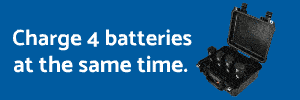- Joined
- Apr 26, 2019
- Messages
- 1,446
- Reactions
- 1,199
In my quest to find the best quality, I had been looking at 10-bit H.265, but (as mentioned in another thread), it may be too much for my current computer system (too jittery with LUT, lens distortion correction, and other effects applied).
So today I thought I would go out and shoot some scenes with both H.264 and H.265 so I could compare them, thinking maybe I could just make do with H.264 until I can rebuild this machine.
But I discovered that you can only do Normal color management with H.264 -- if you press the grayed-out D-log choice, DJI GO will tell you that you need to be in H.265 encoding mode.
REALLY? WHY? The whole world is using H.264 with color management, but that processing is not included on the M2P because it does H.265?
Is there a work-around? Is there a good reason for this? Am I completely mistaken? (I spent quite a bit of time sitting on the park bench with a powered-up AC on the ground, going through all the options trying to get it to work, to no avail.)
Thanks, Chris
PS: I went to the DJI site for this first, but their Mavic 2 forum areas seem kaput today. EDIT: I take that back -- they did another bonehead restructuring of their forum structure again. Every time they do this, it gets flatter.
So today I thought I would go out and shoot some scenes with both H.264 and H.265 so I could compare them, thinking maybe I could just make do with H.264 until I can rebuild this machine.
But I discovered that you can only do Normal color management with H.264 -- if you press the grayed-out D-log choice, DJI GO will tell you that you need to be in H.265 encoding mode.
REALLY? WHY? The whole world is using H.264 with color management, but that processing is not included on the M2P because it does H.265?
Is there a work-around? Is there a good reason for this? Am I completely mistaken? (I spent quite a bit of time sitting on the park bench with a powered-up AC on the ground, going through all the options trying to get it to work, to no avail.)
Thanks, Chris
PS: I went to the DJI site for this first, but their Mavic 2 forum areas seem kaput today. EDIT: I take that back -- they did another bonehead restructuring of their forum structure again. Every time they do this, it gets flatter.










